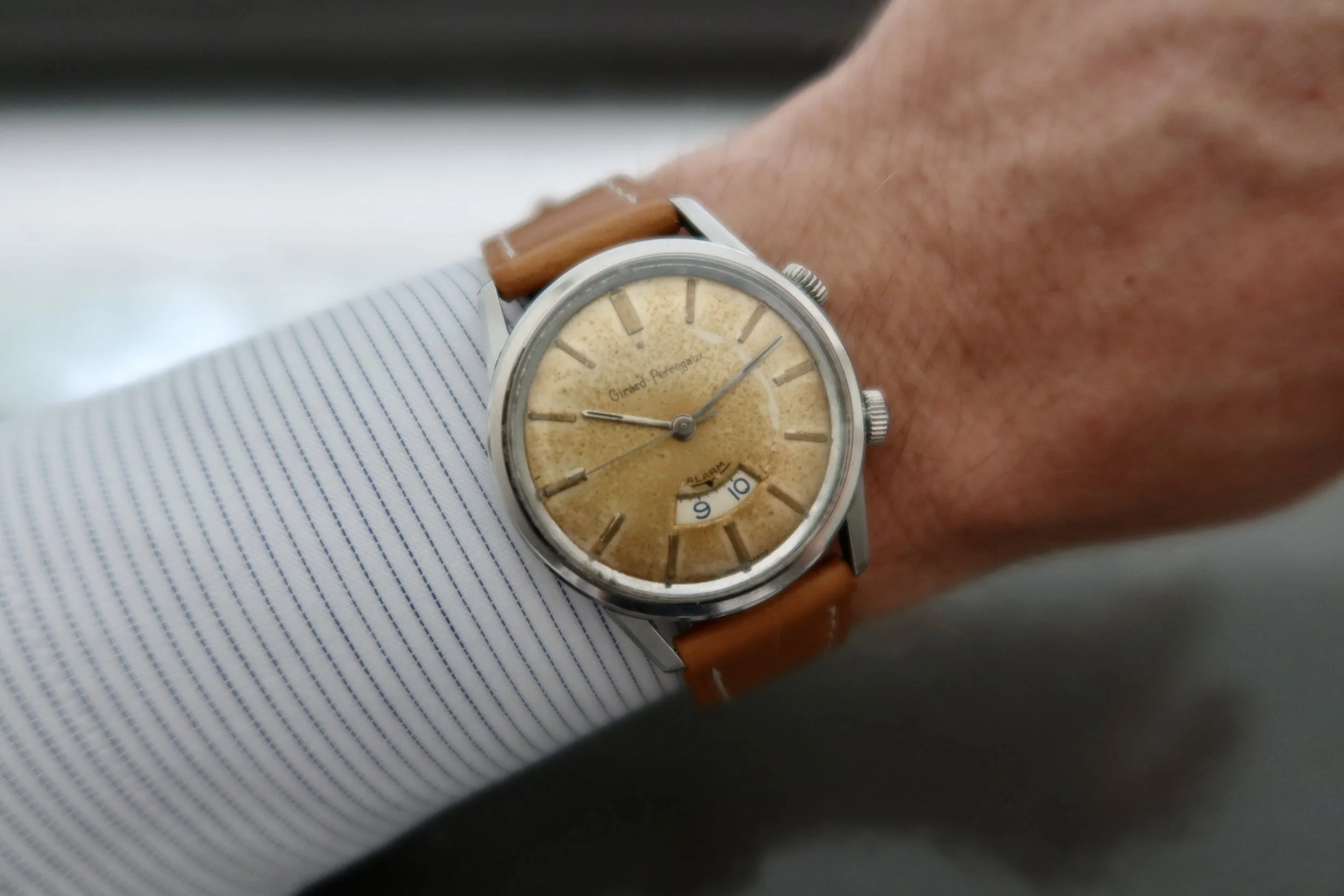Complications Explained: The Mechanical Alarm
Sometimes as watch enthusiasts we forget that the complications found on watches are not just things for us to play with when we wear our watches. The complications, at birth, were created to serve a specific function. They had their utility to the wearer and were vital to every day life for many people. The complication we are discussing today is a great example of this idea.
Having an alarm on your wrist seems almost trivial to many people. We all have phones or electronic clocks that we can set alarms on to tell us when something important comes up (it is worth noting that the electronic clocks are probably on their way out!). But, when the mechanical alarm was first created, this was truly a complication that was used to mark a time of the day the wearer needed to remember.
Eterna’s alarm wrist watch from 1914
Eterna was the first company to patent a mechanical watch alarm in 1908. They began producing watches based on their design in 1914. Unfortunately, the alarm complication caused the time keeping accuracy of their watches to diminish because the alarm would vibrate the case. This meant their watch didn’t have much success as during this time, a watch was relied on heavily for keeping time. There were no iPhones to serve as a back-up just in case.
Fast forward to 1947 an important watch emerged from a brand called Vulcain. Vulcain released their own watch with a manual wind mechanical alarm in it called the Cricket. This watch was a huge success and companies like Jaeger LeCoultre released their own competing watch called the Memovox. The Memovox is the watch we take a look at in the video below to show you how the alarm works. JLC was also the first brand to release an automatic mechanical alarm watch later on.
The essentials for how an alarm watch works are as follows. The watch obviously has hands on the dial to tell the wearer the dial. But watch has an additional hand which can be pointed to the time the wearer wants the alarm to go off at. Once the hours hand and the alarm hand are at the same place on the dial, a hammer hits the inside of the case repeatedly. The sound is a vibrating sound, not like a minute repeater, and is why Vulcains watch is called a Cricket, as it sounds very similar. There are many variations of this complication that can be collected, especially from a vintage perspective. Our video will show you how the complications works.
Enjoy!









